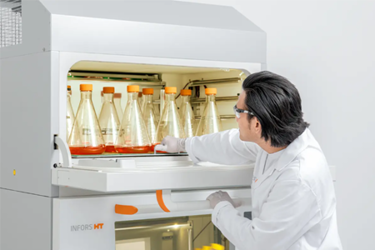What Every Scientist Should Know About Their Orbital Throw

Achieving optimal cell growth in your incubator shaker hinges on a critical factor: orbital throw. This often-overlooked setting dictates the circular motion of your shaker platform, directly impacting aeration, mixing, and nutrient distribution within your cultures. Whether you're working with bacteria, mammalian cells, or high-throughput assays, understanding the nuances of orbital throw can significantly enhance your results.
In this installment of our Back to Basics series, we delve into the science behind orbital throw, exploring its profound effects on oxygen transfer, culture homogeneity, and growth optimization. We provide tailored recommendations for various applications, from bacterial cultures to microtiter plates, and explain why an adjustable orbital throw is a valuable asset in any research setting.
Continue reading to unlock the full potential of your incubator shaker and optimize your cell culture experiments.
Get unlimited access to:
Enter your credentials below to log in. Not yet a member of Bioprocess Online? Subscribe today.
